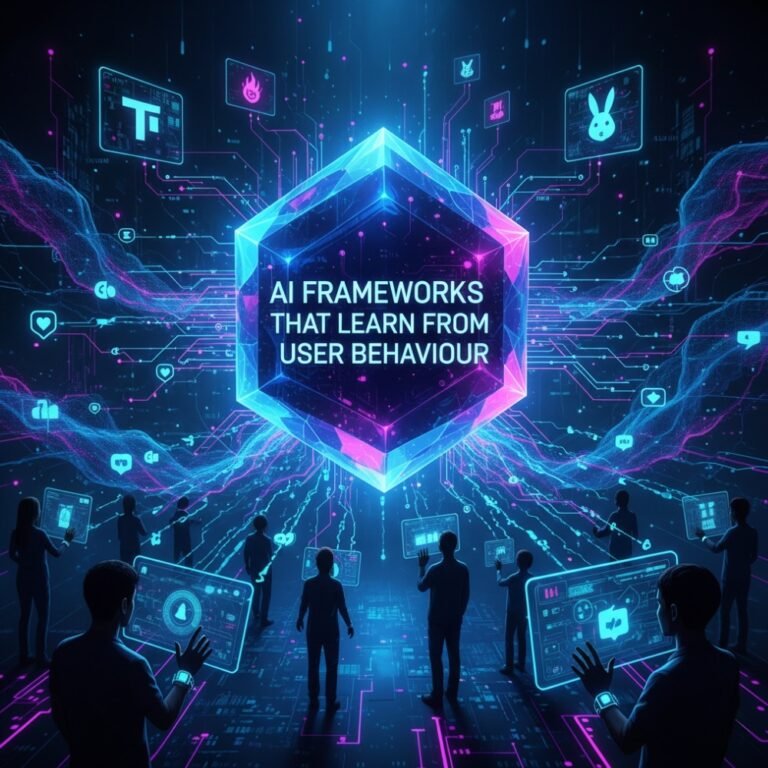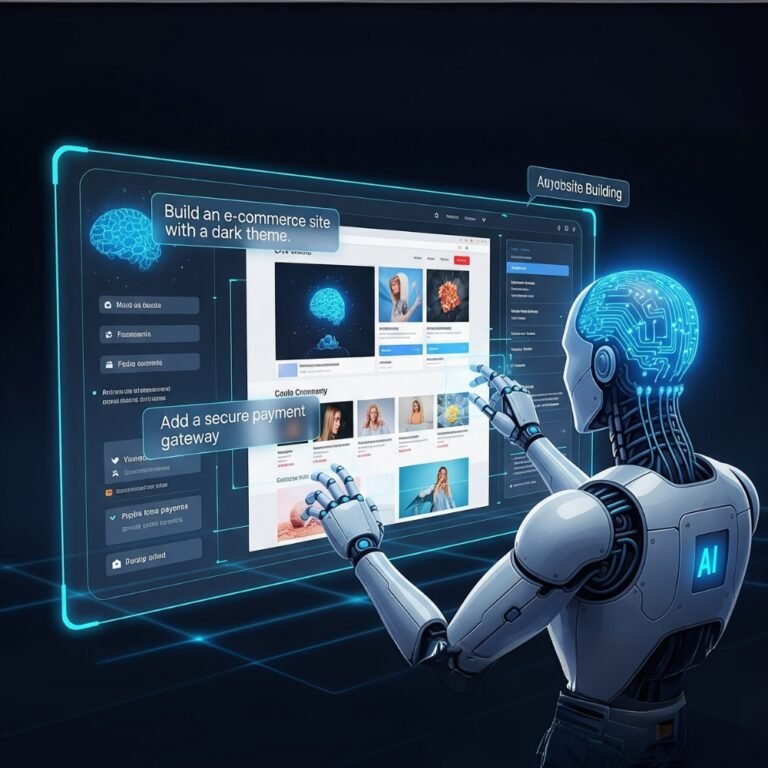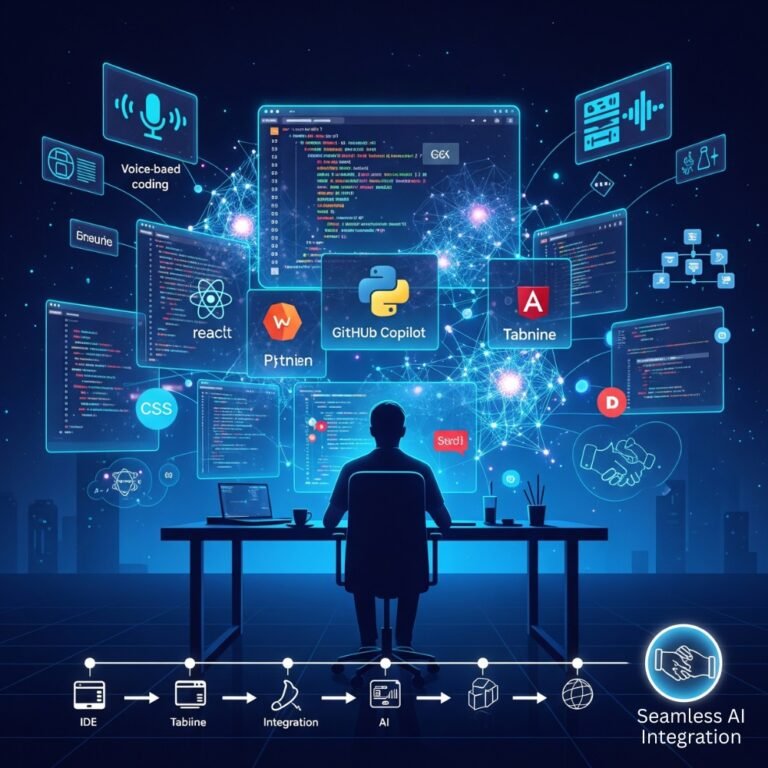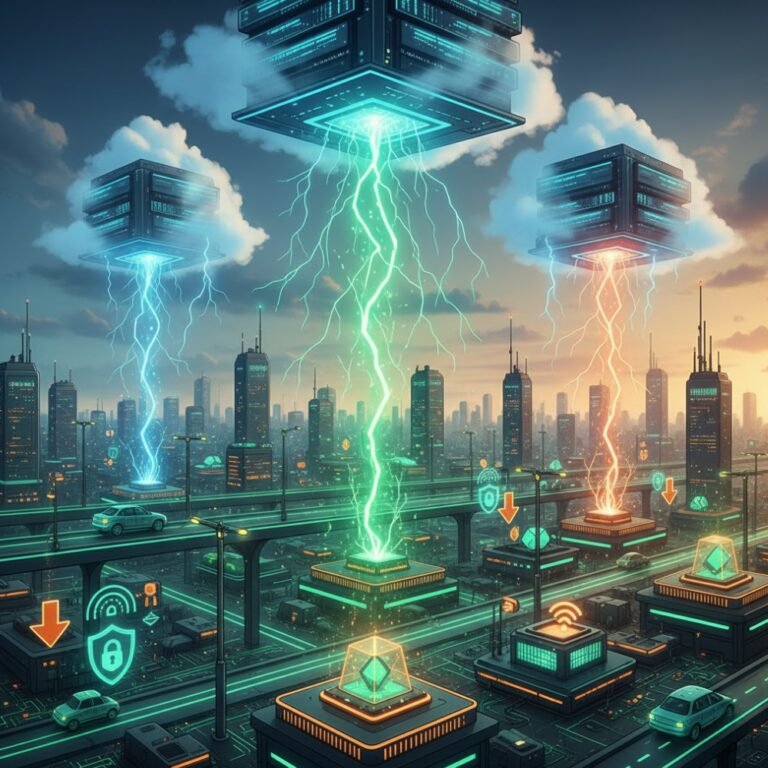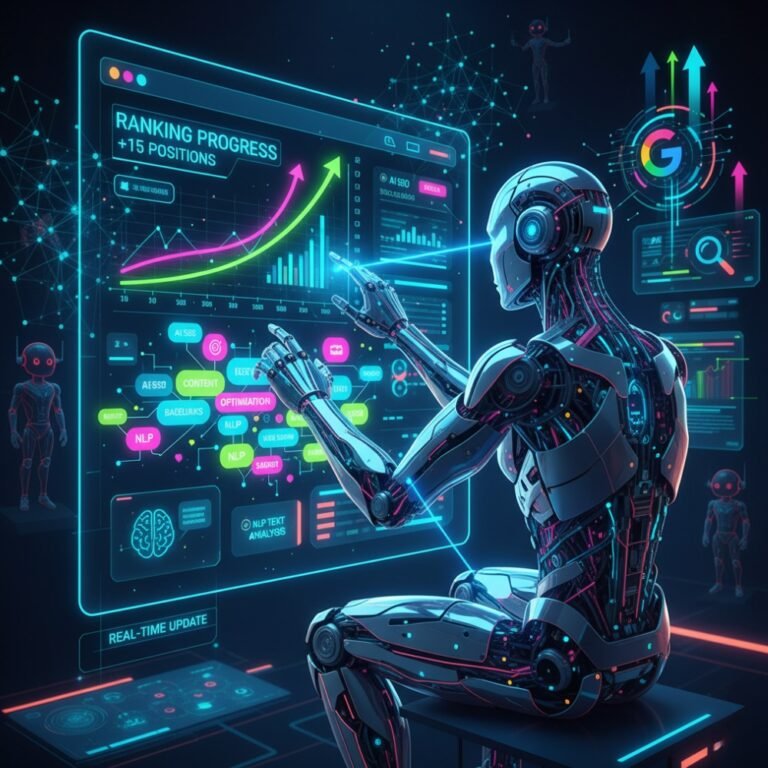Imagine stepping into a digital world where your website isn’t just a flat page but a vibrant, interactive space where users can explore, shop, and connect in 3D. That’s the promise of metaverse-ready website development platforms. As the internet evolves, these tools are transforming how businesses create online presences, blending virtual reality with everyday browsing. Whether you’re a developer eyeing the next big shift or a business owner preparing for Web 3.0, understanding metaverse-ready website development platforms is essential. They enable seamless integration of AR, VR, and blockchain, making websites more engaging than ever.
In this guide, we’ll dive into what makes a site metaverse-compatible, explore key technologies, and highlight top platforms. You’ll get practical steps to build your own, along with real-world examples and future trends. Let’s explore why metaverse web design is set to redefine the digital landscape.
What is the Metaverse?
The metaverse is a collective virtual space where users interact through avatars in immersive, shared environments. It’s not just a game or a social network—it’s an expansive digital universe that merges the physical and virtual worlds. Think of it as the internet on steroids, where you can attend concerts, buy virtual land, or collaborate on projects without leaving your chair.
This concept has gained traction as technology advances, allowing for persistent, real-time interactions. Unlike static websites, the metaverse offers dynamic experiences powered by decentralised systems. For businesses, it’s an opportunity to create deeper connections with audiences.
Evolution from Web 2.0 to Web 3.0 and the Metaverse
Web 2.0 brought us social media and user-generated content, turning the internet into a collaborative hub. But it was centralised, with big tech companies controlling data. Web 3.0 shifts this paradigm, emphasising decentralisation through blockchain, where users own their data and assets.
The metaverse builds on Web 3.0, adding layers of immersion with AR and VR. It’s the natural progression: from reading content (Web 1.0), to interacting with it (Web 2.0), to living in it (metaverse). This evolution means websites must adapt, becoming gateways to 3D worlds rather than isolated pages.
The Growing Demand for Metaverse-Compatible Websites
Demand is skyrocketing as consumers crave more engaging online experiences. A survey of digital trends shows that by 2025, over half of global businesses plan to invest in metaverse technologies. E-commerce sites, for instance, are integrating virtual try-ons, while educators use immersive simulations.
This surge is driven by younger generations who expect interactivity. Brands ignoring this risk falling behind, as metaverse-compatible sites boost engagement and retention. It’s not hype—it’s a practical shift towards more human-centric digital spaces.
Why “Metaverse-Ready” Platforms are the Next Big Shift in Web Development
Traditional web development focuses on 2D layouts, but metaverse-ready platforms prioritise 3D immersion and interoperability. They allow seamless transitions between devices, from desktops to VR headsets. This shift promises decentralised ownership, where users control their digital identities.
For developers, it means new tools for creating scalable, secure experiences. Businesses benefit from innovative revenue streams like virtual events. As 5G and AI mature, metaverse web design will become standard, making now the time to prepare.
Understanding Metaverse-Ready Websites
A metaverse-ready website goes beyond traditional browsing—it’s a portal to interactive, 3D environments where users can navigate, socialise, and transact. These sites leverage Web 3.0 technologies to ensure compatibility with virtual worlds.
Definition: What Makes a Website “Metaverse-Ready”?
At its core, a metaverse-ready site supports immersive features like 3D rendering, real-time collaboration, and blockchain integration. It must handle VR/AR inputs, maintain persistent user data, and connect across platforms. Think of it as a website that feels alive, adapting to user movements and preferences.
Key markers include support for WebXR standards, decentralised hosting, and avatar customisation. Without these, a site remains stuck in Web 2.0 limitations.
Core Features of a Metaverse-Integrated Website
- Immersive 3D Environments: Users explore spaces with depth, not just scrolls.
- Real-Time Interactions: Chat, collaborate, or trade instantly with others.
- Blockchain Integration: Secure ownership of digital assets like NFTs.
- Cross-Device Compatibility: Works on browsers, mobiles, and VR headsets.
- AI-Driven Personalisation: Content adapts based on user behaviour.
These features create engaging experiences that traditional sites can’t match.
Difference Between Traditional and Metaverse-Ready Websites
Traditional websites are static, relying on HTML and CSS for 2D displays. They’re easy to build but lack depth. Metaverse-ready ones use 3D frameworks and decentralised tech, offering interactivity and persistence.
For example, a traditional e-commerce site shows product images; a metaverse-ready one lets you walk through a virtual store. The former is passive; the latter is experiential, boosting user time on site.
Real-World Examples of Metaverse-Enabled Websites
Brands are already embracing this. Nike’s Nikeland lets users design and try virtual sneakers in a 3D space. Gucci’s virtual garden on Roblox allows avatar customisation and events. These sites blend shopping with socialising, showing how metaverse web design drives loyalty.
In education, platforms like Engage offer virtual classrooms where students interact in 3D. These examples prove the metaverse isn’t futuristic—it’s here, enhancing user experiences.
Key Technologies Powering Metaverse Website Development
Building metaverse-ready sites requires cutting-edge tools. These technologies form the backbone, enabling seamless, secure experiences.
Web 3.0 Technologies: Blockchain, NFTs, and Smart Contracts
Blockchain ensures decentralised data storage, preventing single points of failure. NFTs allow unique digital ownership, like virtual art on sites. Smart contracts automate transactions, such as buying virtual land without intermediaries.
Together, they create trustless environments, vital for metaverse commerce.
AR (Augmented Reality) and VR (Virtual Reality) Integration
AR overlays digital elements on the real world, like trying furniture via a phone camera. VR immerses users fully, using headsets for 360-degree views.
Integration via APIs makes websites responsive to these inputs, turning flat pages into dynamic portals.
AI and Machine Learning in Metaverse Website Experiences
AI powers personalised content, like recommending products based on avatar interactions. Machine learning optimises performance, predicting user paths to reduce load times.
In metaverse web design, AI creates intelligent NPCs (non-player characters) for realistic simulations.
3D Web Design Frameworks (Three.js, Babylon.js, A-Frame)
Three.js handles complex 3D graphics in browsers. Babylon.js simplifies scene creation with physics engines. A-Frame, built on Three.js, uses HTML-like syntax for VR experiences—check it out at aframe.io.
These frameworks make 3D web development platforms accessible to non-experts.
Role of Spatial Computing and Digital Twins
Spatial computing maps physical spaces digitally, enabling accurate AR overlays. Digital twins replicate real objects in virtual form, like a factory model for training.
They enhance realism, making metaverse sites useful for industries like manufacturing.
Essential Features of Metaverse-Ready Platforms
To thrive in the metaverse, platforms must include these must-haves for user satisfaction.
Interoperability and Cross-Platform Connectivity
Sites should work across ecosystems, like linking a Decentraland avatar to a Roblox event. Standards like WebXR ensure smooth transitions.
Virtual Commerce and Digital Asset Integration
Enable buying with crypto or NFTs. Features like virtual wallets support seamless transactions.
Decentralised Identity (DID) and Wallet Support
DIDs give users control over their data, without central logins. Wallet integration secures assets, reducing fraud risks.
Real-Time 3D Environments and User Avatars
Avatars represent users, customisable for expression. Real-time rendering keeps interactions fluid.
Secure, Decentralised Hosting Options
Use IPFS or similar for hosting, ensuring data isn’t controlled by one entity. This boosts privacy and uptime.
Top Metaverse-Ready Website Development Platforms
When it comes to metaverse-ready website development platforms, choosing the right one can make or break your project. These tools focus on 3D web development platforms, VR and AR website frameworks, and decentralised web hosting. Here’s a curated list of top options, each excelling in creating immersive experiences.
- Meta Spark (formerly Spark AR) – Ideal for immersive AR experiences, this platform lets developers build interactive filters and effects. It’s user-friendly for adding AR to websites, enhancing engagement with real-world overlays. Explore more at spark.meta.com.
- Unity WebGL – Perfect for 3D and VR-based website experiences, Unity exports to WebGL for browser compatibility. It supports high-fidelity graphics and physics, making it a go-to for game-like metaverse sites. Visit unity.com for details.
- Unreal Engine Pixel Streaming – This delivers high-fidelity web-based metaverse sites by streaming complex renders from servers. It’s great for detailed environments without heavy client-side processing. Check unrealengine.com for resources.
- A-Frame by Mozilla – A lightweight 3D and VR web framework, A-Frame uses simple HTML tags to build scenes. It’s open-source and integrates easily with WebVR, ideal for quick prototypes. Learn at aframe.io.
- Webaverse / Decentraland SDK – For decentralised metaverse web integrations, Webaverse offers open tools for blockchain-based worlds. Decentraland’s SDK enables custom parcels with NFTs. See webaverse.com and decentraland.org.
- MetaWorld / Spatial.io – As a no-code immersive web world builder, Spatial.io allows drag-and-drop creation of virtual spaces. It’s excellent for events and collaborations, publishing to web and VR. Try it at spatial.io.
- X3D and WebXR – These open standards support metaverse web experiences. X3D handles 3D models, while WebXR enables AR/VR in browsers. They’re royalty-free and cross-platform. Resources at web3d.org and immersiveweb.dev.
These metaverse-ready website development platforms cater to various needs, from no-code to advanced coding, ensuring your site is future-proof.
How to Build a Metaverse-Ready Website
Creating a metaverse-ready site isn’t as daunting as it seems. Follow this step-by-step guide to turn your vision into reality.
Step-by-Step Process (From Concept to Deployment)
- Define Your Goals: Decide if it’s for e-commerce, education, or events. Sketch user journeys in 3D.
- Research and Plan: Analyse audience needs and competitors. Outline features like avatars and interactions.
- Design the Experience: Create wireframes for 3D layouts. Focus on intuitive navigation.
- Develop and Integrate: Code the backend with blockchain, frontend with 3D frameworks.
- Test Thoroughly: Check across devices for bugs and performance.
- Deploy and Monitor: Launch on decentralised hosts, track analytics for improvements.
Choosing the Right Platform and Tools
Match your skills: No-coders pick Spatial.io; pros opt for Unity. Consider scalability and costs.
Designing Immersive 3D Interfaces
Use tools like Blender for models. Ensure responsive design for VR headsets and mobiles.
Integrating Blockchain or NFT Functionalities
Add wallets via libraries like Web3.js. Enable NFT minting for unique assets.
Optimising Performance for VR and AR Environments
Compress assets, use efficient rendering. Test on low-end devices to avoid lag.
Security and Privacy in the Metaverse Web
In decentralised spaces, protection is paramount.
Protecting User Data in Decentralised Environments
Use encryption and zero-knowledge proofs to keep data private.
NFT and Wallet Security Best Practices
Educate users on two-factor authentication. Implement secure smart contracts.
Avoiding Phishing and Digital Identity Theft in Metaverse Websites
Verify links, use hardware wallets. Regular audits prevent vulnerabilities.
Real-World Use Cases
Metaverse-ready sites are transforming industries.
Metaverse-Ready eCommerce Platforms
Stores like those on Decentraland let users shop in virtual malls, trying products via AR.
Virtual Real Estate and Property Showcasing
Platforms like Earth 2 allow buying digital land, mirrored to real addresses for investment.
Education and Training in Metaverse Environments
Virtual classrooms on Engage simulate labs, making learning interactive.
Entertainment and Virtual Event Hosting
Host concerts in Roblox, where fans interact live.
Corporate Showrooms and Digital Twins
BMW uses digital twins for virtual car showrooms, aiding remote sales.
Challenges in Metaverse Website Development
Despite excitement, hurdles exist.
Technical Limitations of Browsers and Hardware
Not all browsers support WebXR fully; hardware varies, causing inconsistencies.
High Costs of 3D and VR Development
Tools and talent are expensive, especially for small teams.
Lack of Standardised Protocols
Interoperability issues arise without universal standards.
User Experience Challenges in Immersive Design
Motion sickness and complex navigation can deter users.
The Future of Metaverse-Ready Web Platforms
Looking ahead, innovation will accelerate.
The Role of AI in Automating Metaverse Experiences
AI will generate content dynamically, personalising worlds.
Integration with IoT and 5G for Real-Time Interaction
5G enables lag-free interactions; IoT links physical devices to virtual ones.
Predictions for the Next Decade of Web Development
By 2035, most sites could be metaverse-ready, with AI-driven economies.
How Businesses Can Prepare for Metaverse Adoption
Invest in training, start small with pilots, and partner with experts.
Tools & Resources
Boost your skills with these.
- Libraries and Frameworks: Three.js for 3D, Web3.js for blockchain.
- Recommended Metaverse SDKs: Unity, Unreal Engine.
- Tutorials and Communities: Join Reddit’s r/metaverse or Mozilla’s A-Frame docs.
In conclusion, metaverse-ready website development platforms are reshaping how we interact online. By embracing these tools, businesses can lead in Web 3.0. Start exploring today to stay ahead.
FAQs
What are metaverse-ready website development platforms?
They are tools for building immersive, 3D sites compatible with virtual worlds, using AR, VR, and blockchain.
How do I choose the best 3D web development platform?
Consider your needs: No-code like Spatial.io for beginners, advanced like Unity for pros.
Is metaverse web design expensive?
Initial costs can be high, but open-source options reduce expenses over time.
Can traditional websites become metaverse-ready?
Yes, by integrating frameworks like A-Frame and WebXR.
What’s the role of blockchain in VR and AR website frameworks?
It enables secure asset ownership and decentralised identities.



